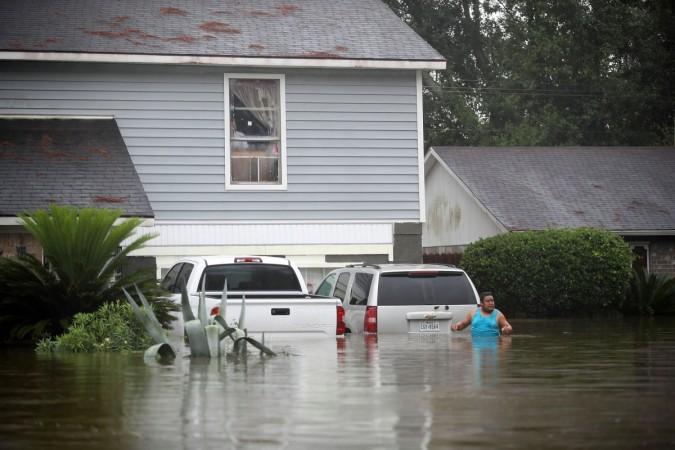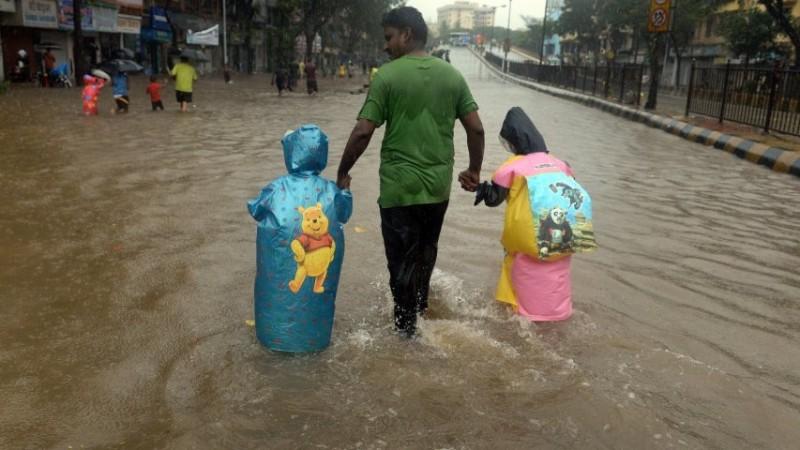
Last week, the planet witnessed climate fury of a kind never witnessed in recent years. While Hurricane Harvey bagged the spotlight with its destruction trail in Houston and surrounding areas, claiming around 30 lives, South Asia saw over 1,200 killed in heavy rains that saw major rivers breaching banks. It was the worst flood to hit the region in recent times.
Over 17 million people were affected in the states of Bihar, Uttar Pradesh and West Bengal in India where the casualty was around 500. Metropolis Mumbai stole the limelight again with woes of urban chaos. Earlier on, Assam saw almost 600 villages submerged and a toll of 150.
In Bangladesh, a third of the nation was reported to be submerged in flood waters. Unicef reports that an estimated 524,375 houses are reported to have been partially damaged and 77,272 are believed to have been destroyed by the floods. Some 703 shelters in flood-affected areas are sheltering more than 197,000 people.
Floods and hurricanes have been getting stronger by the day. In Houston, the storm delivered nine trillion gallons of water in two days, said news reports. Climate scientists have been warning exactly of this when they spoke of extreme weather events. Carbon emissions are heating up the earth like never before in human history.
This April, the atmospheric carbon dioxide (CO2) levels measured was an all-time high at 410.28 parts per million (ppm). It was just last year that this measure crossed the tipping point of 400 ppm, a first in several million years. Ongoing trends suggest this could touch 460 by end of the century, raising the temperature by three degrees. Ideally, we need to keep the carbon level at 350 ppm.
Carbon dioxide being a greenhouse gas traps the heat radiated back by the earth and keeps it locked within the surface and atmosphere. This in turn heats up land, seas and polar ice. Melting ice raises sea levels and also results in lesser sunlight reflected back. Oceans become acidic and inhospitable to marine life. Warm oceans also influence the climate. For one, the rains become more intense.
As the world warms, evaporation speeds up resulting in more water vapour in the air. For every half a degree Celsius in warming, there is about a three percent increase in moisture content in the air. On meeting cooler air, the moisture then condenses into tiny droplets which keep getting bigger as they float and gather mass. Finally after a critical mass, it pours down as rain. As oceans get warmer, hurricanes and storms gather more vapour and hence, more intensity.

Whether it be Houston or Bangladesh, man-made global warming is the obvious reason for the intense water fall. Where the water goes after falling on land depends again on man-made obstructions.
In Houston as also in Mumbai, rapid development on the flood plains has left no place for the water to retreat. It simply stays put and floods the place. A recent study by the Indian Institute of Science found that over 78 percent of Bangalore is concretised, and that trends show that the city will soon be 93 percent concrete. Even storm water drains are concretised, diluting their capacity to carry away water. No surprise then that we have been witnessing flooding of many areas in the city.
Unplanned cities where concrete structures keep adding up every day will have to be redesigned for flood. In Houston which is said to have no zoning laws anyone can build anything wherever, leaving a concrete jungle sprouting on its flood plains and prairie wetlands. A media report noted how Houston has 30 parking sites for every resident!
Energy and climate
Floods apart, these structures, often not thought out, end up consuming more electricity owing to poor design and materials used. Unplanned cities in India also have the problem of traffic jams with vehicles more fuel.
As per International Energy Agency figures, around 80 percent of global energy is from fossil fuels, resulting in 32.3 gigatonnes of carbon emissions. World energy demand is predicted by IEA to grow by nearly a third between 2013 and 2040. Energy-related emissions are the majority of global greenhouse gas emissions.
The Paris deal seeks to limit temperature rise to two degrees and further strive to check it at 1.5 degrees above pre-industrial times (1880), a goal which already seems impossible. To remain within two degrees, global emissions should peak latest between 2020 and 2030, says a IEA analysis. But trends show the peaking will not happen by 2030.
With 195 signatories, who are responsible for around 55 percent of global emissions, pledging to cut emission under the United Nations Framework Convention on Climate Change (UNFCCC), it still would leave 13.7 billion tonnes of CO2 (60 percent) above the level needed to stay within two degrees warming by 2035. We have already breached the one-degree rise. A University of Washington study says the most likely rise will be about 3.2 degrees by 2100. At that temperature, extreme weather events and sea level rise will be of a catastrophic level, scientists have warned.
Carbon emissions tend to stay in the atmosphere for hundreds of years before being absorbed on land. It keeps heaping up the heat. Even if we stop all emissions today it will take 40-50 years for the climate to stabilise at some higher temperature than the present one.
Solutions
What needs to be done? Can we as individuals do enough in changing our lifestyles as sought? In the way we choose our mode of transport, conserve energy and water, reduce consumption, etc.
While every bit counts, some environmental activist like American Derrick Jensen point out that it all adds up to just that -- bits! The need of the hour is for citizenry to take on the industrial civilisation of our times.
In his essay made into a film 'Forget shorter showers' he throws statistics to show how industry, government and agribusiness account for a three fourth of all energy consumption in the US. So also with waste generation or water consumption.
Calling the focus on personal consumption as a 'campaign of systematic misdirection' he calls for organised political resistance as the only way to keep the planet liveable.
In the present context of urban and rural floods, it is time to force governments to enforce stringent laws to check concrete spread at the cost of wetlands and forests. Development must address the long-term implications as well as short-term needs.
Development must also address inequity, both within a nation and between nations. Experts have called for a 'planned de-growth'' where rich countries that use up thrice their share of resources on the planet cut down their consumption.
A study from Glenn Althor et al published last year in Nature Scientific Reports found that more than half of the highest-emitting countries are among the least vulnerable to climate change while almost two-thirds of those with low or moderate emissions are acutely vulnerable to the effects. The 'loss and damage' provision of the climate pact calls upon rich nations to pay up for loss in poor nations that is linked to climate change. The response has not been as desired.
Above all, development cannot be measured by economic growth based on GDP which goes purely by consumption, ignoring the social and environmental cost. A Genuine Progress Indicator, that subtracts negative outcomes from GDP and looks at an equitable development, alone can say what progress a nation has made.
Where the rich can always go back to their bank accounts and rebuild homes, the millions displaced in South Asia will take a long time to limp back to normal lives. By then, it could well be time for another devastation.















